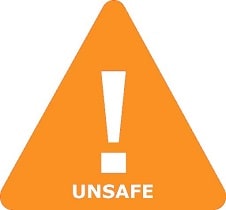Is EINECS 201-009-4 Safe in Breastfeeding
Question
I am a breastfeeding mother and i want to know if it is safe to use EINECS 201-009-4? Is EINECS 201-009-4 safe for nursing mother and child? Does EINECS 201-009-4 extracts into breast milk? Does EINECS 201-009-4 has any long term or short term side effects on infants? Can EINECS 201-009-4 influence milk supply or can EINECS 201-009-4 decrease milk supply in lactating mothers?
EINECS 201-009-4 lactation summary

- DrLact safety Score for EINECS 201-009-4 is 5 out of 8 which is considered Unsafe as per our analyses.
- A safety Score of 5 indicates that usage of EINECS 201-009-4 may cause serious side effects in breastfed baby.
- Our study of different scientific research indicates that EINECS 201-009-4 may cause moderate to high side effects or may affect milk supply in lactating mother.
- Our suggestion is to use safer alternate options rather than using EINECS 201-009-4 .
- It is recommended to evaluate the advantage of not breastfeeding while using EINECS 201-009-4 Vs not using EINECS 201-009-4 And continue breastfeeding.
- While using EINECS 201-009-4 Its must to monitor child for possible reactions. It is also important to understand that side effects vary largely based on age of breastfed child and time of medication in addition to dosage.
- Score calculated using the DrLact safety Version 1.2 model, this score ranges from 0 to 8 and measures overall safety of drug in lactation. Scores are primarily calculated using publicly available case studies, research papers, other scientific journals and publically available data.
Answer by Dr. Ru: About EINECS 201-009-4 usage in lactation
Because of high protein-binding capacity, clinically significant excretion into breast milk is unlikely. However, both the mother and the infant would benefit of the use of a better-known alternative drug that would be safer while breastfeeding, especially in the neonatal period and in case of prematurity. In spite of a low excretion into breast milk, it has been described a case of severe apnea in a 12 days old infant. A causal connection between those features and this drug has not been clearly defined (Briggs 2011, p. 410). It is licensed for use in children from 6 months of age as intestinal antispasmodic and treatment of Familial Mediterranean Fever, so there would be less risky when used by the breastfeeding mother.
Answer by DrLact: About EINECS 201-009-4 usage in lactation
EINECS 201-009-4 has not been well studied during breastfeeding. However, one possible case of apnea has been reported in a breastfed infant that is similar to reactions that have occurred in infants given the drug directly.[1] EINECS 201-009-4 should not be used during lactation.
EINECS 201-009-4 Side Effects in Breastfeeding
Relevant published information was not found as of the revision date. The manufacturer reported a breastfed infant who developed apnea during maternal therapy with EINECS 201-009-4.[1] EINECS 201-009-4 is a possible cause of the reaction.
EINECS 201-009-4 Possible Effects in Breastfeeding
Relevant published information in nursing mothers was not found as of the revision date. Anticholinergics can inhibit lactation in animals, apparently by inhibiting growth hormone and oxytocin secretion.[2][3][4][5][6] Anticholinergic drugs can also reduce serum prolactin in nonnursing women.[7] The prolactin level in a mother with established lactation may not affect her ability to breastfeed.
Alternate Drugs
Flavoxate(Low Risk)
Scopolamine(Low Risk)
Fesoterodine(Low Risk)
Ipratropium(Safe)
Oxybutinyn(Low Risk)
Glycopyrrolate(Unsafe)
Atropine(Safe)
Tropicamide(Low Risk)
Dicyclomine(Unsafe)
Cyclopentolate(Low Risk)
Tolterodine(Low Risk)
Solifenacin(Unsafe)
Scopolamine(Low Risk)
Fesoterodine(Low Risk)
Ipratropium(Safe)
Oxybutinyn(Low Risk)
Glycopyrrolate(Unsafe)
Atropine(Safe)
Tropicamide(Low Risk)
Dicyclomine(Unsafe)
Cyclopentolate(Low Risk)
Tolterodine(Low Risk)
Solifenacin(Unsafe)
Flavoxate(Low Risk)
